How to play seven-string guitar
First lessons in scales and riffs - with tab and audio!
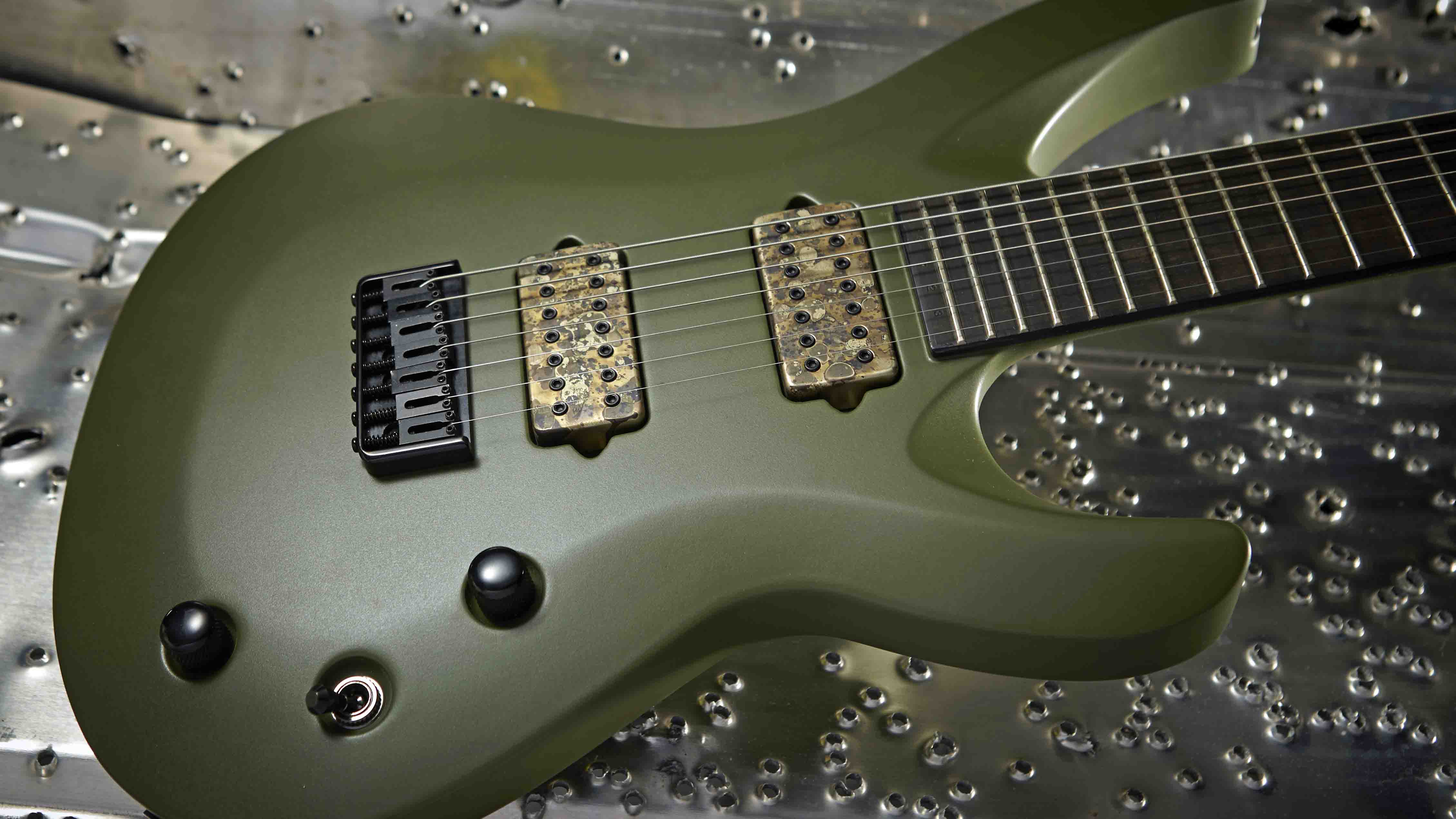
Introduction: seven-string chords
Wanna get into 7-string guitar? Our guide will get you heading towards seven heaven, with a look at chords, scales, riffs and licks
Seven-string chords
Seven-string tuning (low to high): BEADGBE
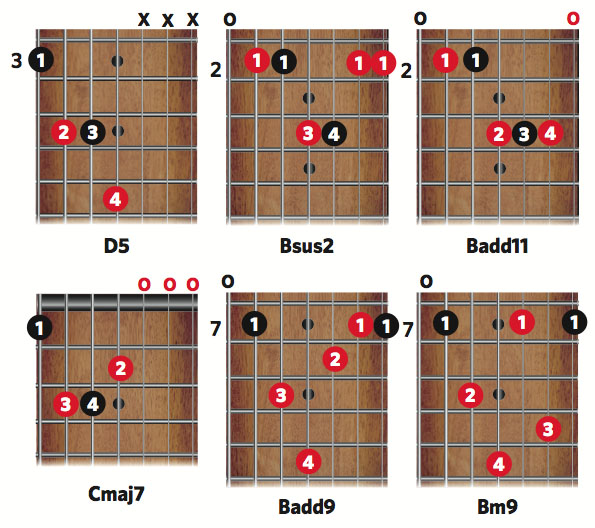
The addition of a seventh string to the guitar offers up new sonic potential when it comes to playing chords and using the open low string can free up your fingers to form cool-sounding extended chords; these are chords with extra notes that go beyond basic major, minor or powerchords (such as 9th and 11th intervals).
Of course, the bass string may be fretted or open. Keep in mind, though, that things can sound muddy in the bass region if there are lots of notes. We've kept every sixth string note at least a 5th higher than the seventh string to make a little room at the bottom end in these chord shapes.
Don't Miss
In pictures: an introduction to seven-string and eight-string guitars
Chris Broderick on seven-string guitars and Jackson signature models
Trivium's Corey Beaulieu talks seven-string guitars, signature models and songwriting
Periphery's Misha Mansoor talks seven-strings, eight-strings and Jackson guitars
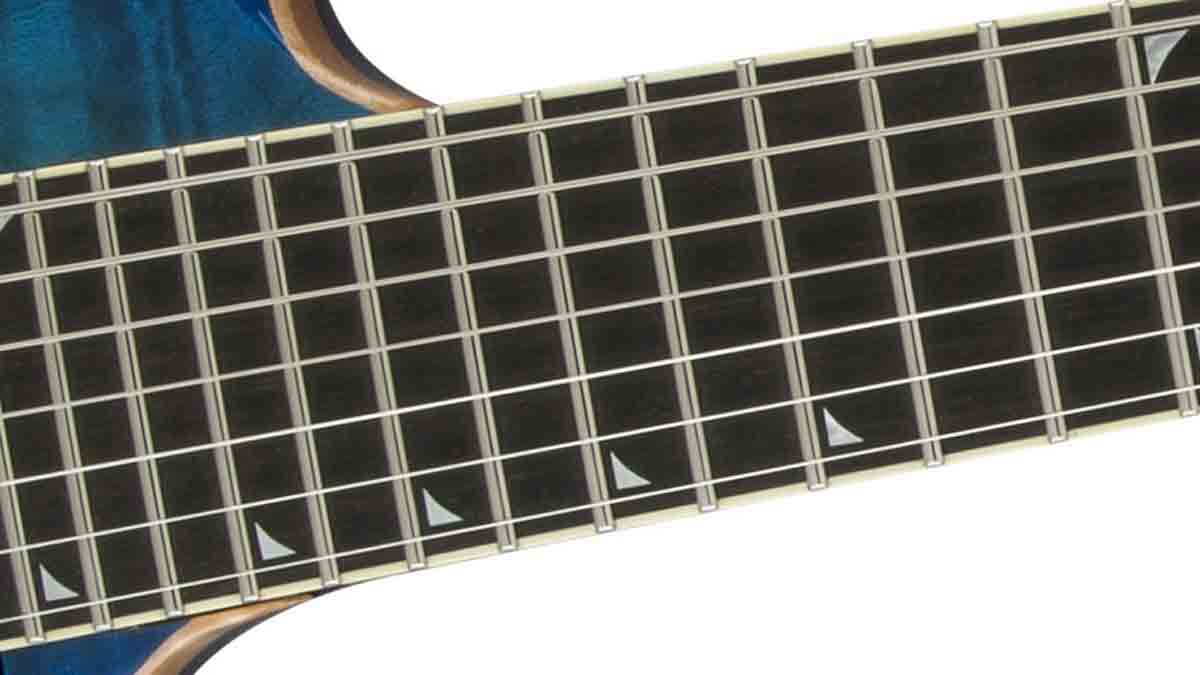
Seven-string scales
Seven-string scales are not far removed from six-string shapes (they just have one extra string, of course!) but the extra range can be useful for keeping position shifts to a minimum, and shown below are two of the most important scales.
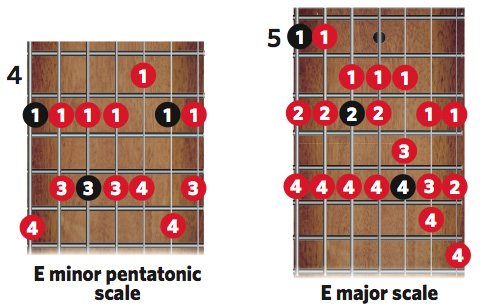
If you're familiar with the five minor pentatonic shapes for six-string you may notice that this is shape 3, just extended on to the seventh string (if this is new to you, don't worry; just treat the scale as a new shape for now).
We've also shown the major scale, which, spread over seven strings, covers nearly three octaves within one shape – perfect for burning up the neck without the challenge of tricky position shifts.
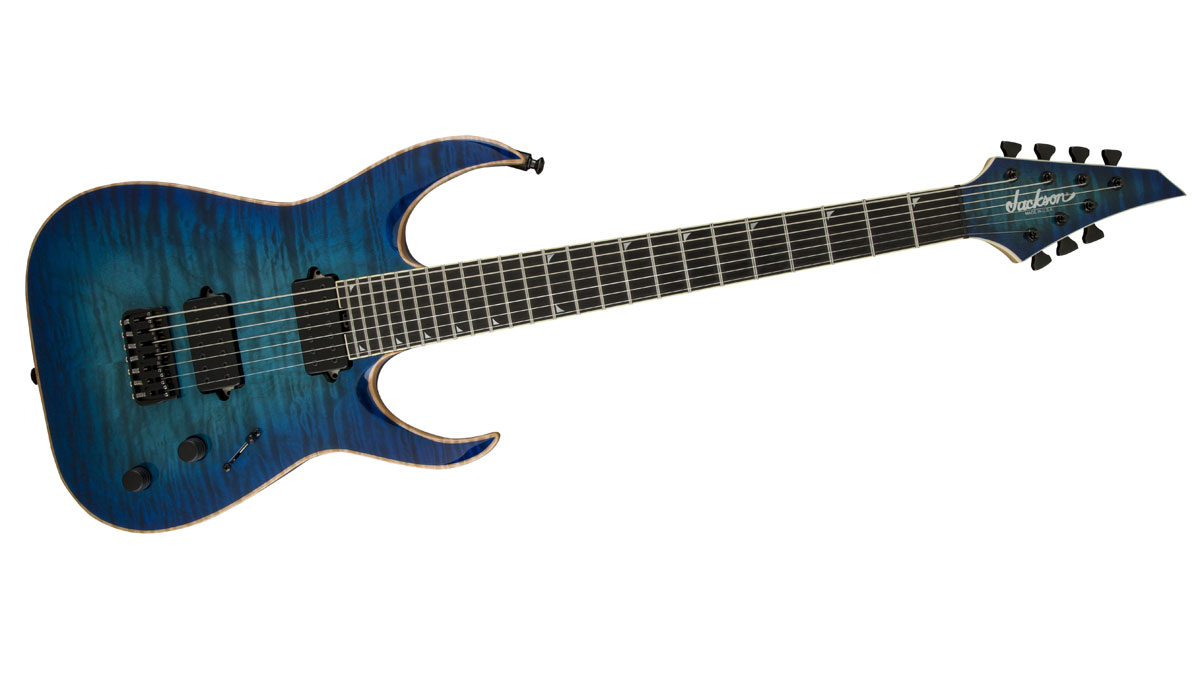
Seven-string riffs
1. Meet the seventh string!
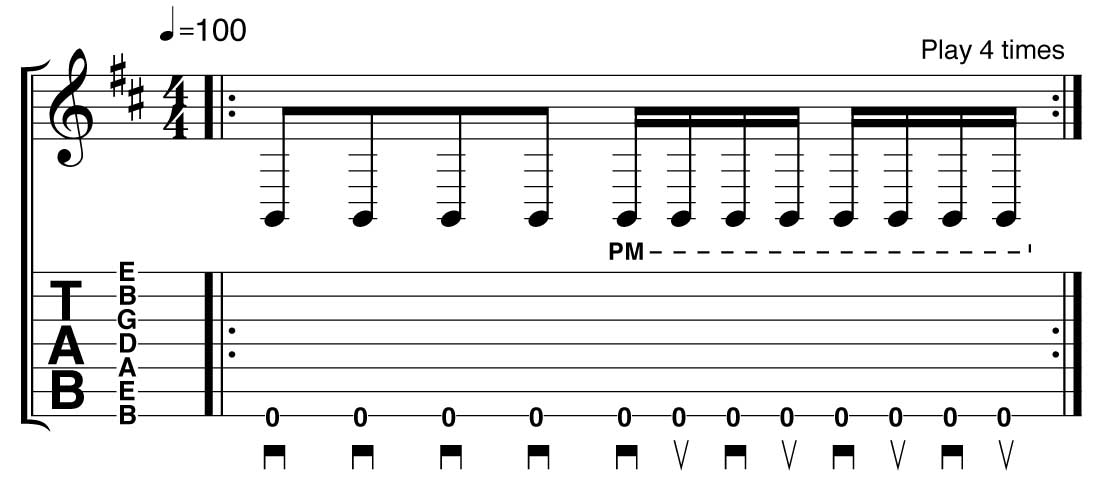
The first time you play a seven- or eight-string guitar you may be surprised at how loose and woolly-sounding the low string sounds, so try this simple palm-muting exercise to help control that resonant string. Pick lightly so as not to push the seventh string out of tune.
Meet the seventh string! tab (fullscreen)
2. String muting
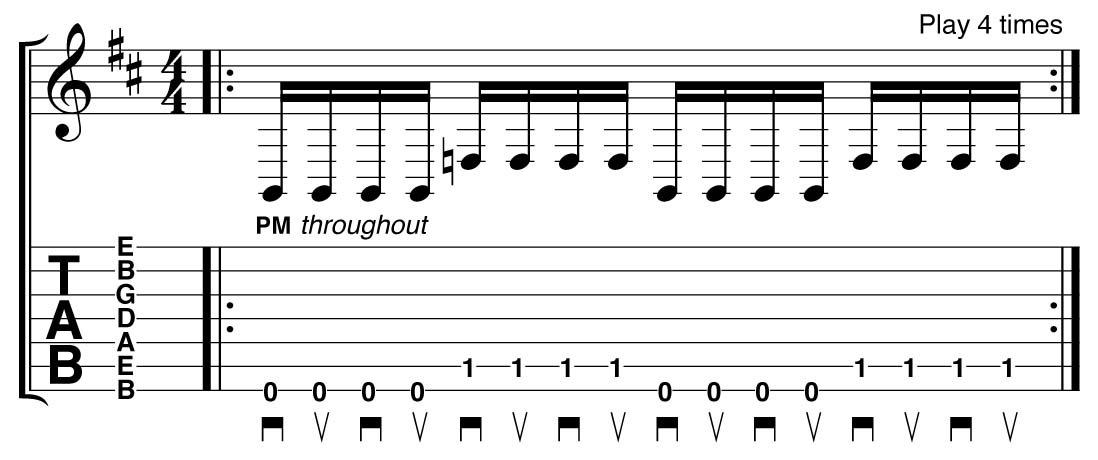
A risk with open-string riffing is that the open note keeps ringing out as you move to the other strings, and this is especially so with a low seventh string. Here, as you play the sixth string, try to mute the open seventh string with the tip of your fretting finger to help separate the notes.
String muting tab (fullscreen)
3. Scalic riff
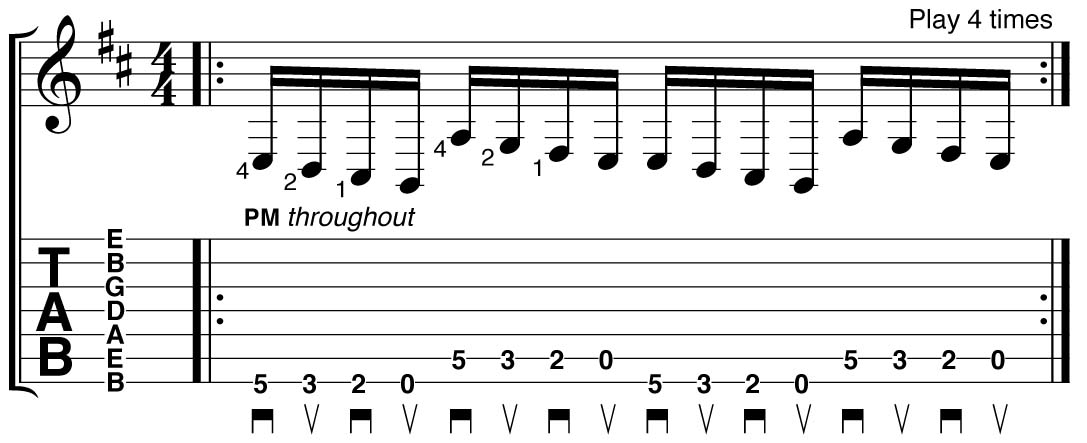
This scalic riff is a development on the previous lines. Spanning four fingers across four frets is a common approach on any guitar, but the stretch over to the seventh string can be a challenge at first. Keep your thumb low on the neck and your fingers arched out in front to maximise your reach.
4. Crossing strings
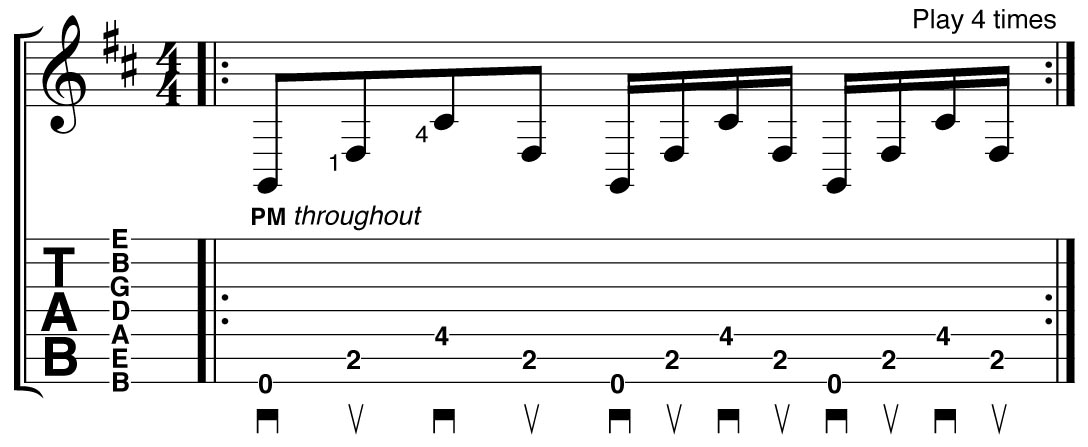
Aim for the same ‘chugging’ palm-muted picked sound as we used on the previous exercises here; the challenge is crossing to a new string on every note. The rhythm is exactly the same as it was on example 1 but here we recommend using alternate picking throughout.
Crossing strings tab (fullscreen)
5. Heavy metal powerchord riff

This riff gives you a feel for the sheer weight that heavy metal style powerchords have when played on the lowest four strings of a seven-string guitar. Play the first bar entirely with downstrokes, and don’t forget to use palm-muting. It’s a vital part of the heavy chugging sound.
In bar 2, keep your picking hand moving at the same rate, but this time add an upstroke after each downstroke to produce six even, precise notes on beats 1 and 3.

Corey Beaulieu-style seven-string riff
Featuring a mixture of simple powerchords and a short repeating melodic line, this Trivium-inspired B minor riff will help you home in on the lower range of the seven-string. Play the powerchords with palm-muted downpicking for a tight, chunky attack, but notice that the first chord of each grouping is unmuted so that it jumps out in contrast to the muted notes.
The melody lines are unmuted, but it is worth keeping your pick hand in the palm-mute position to keep the idle bass strings silent.
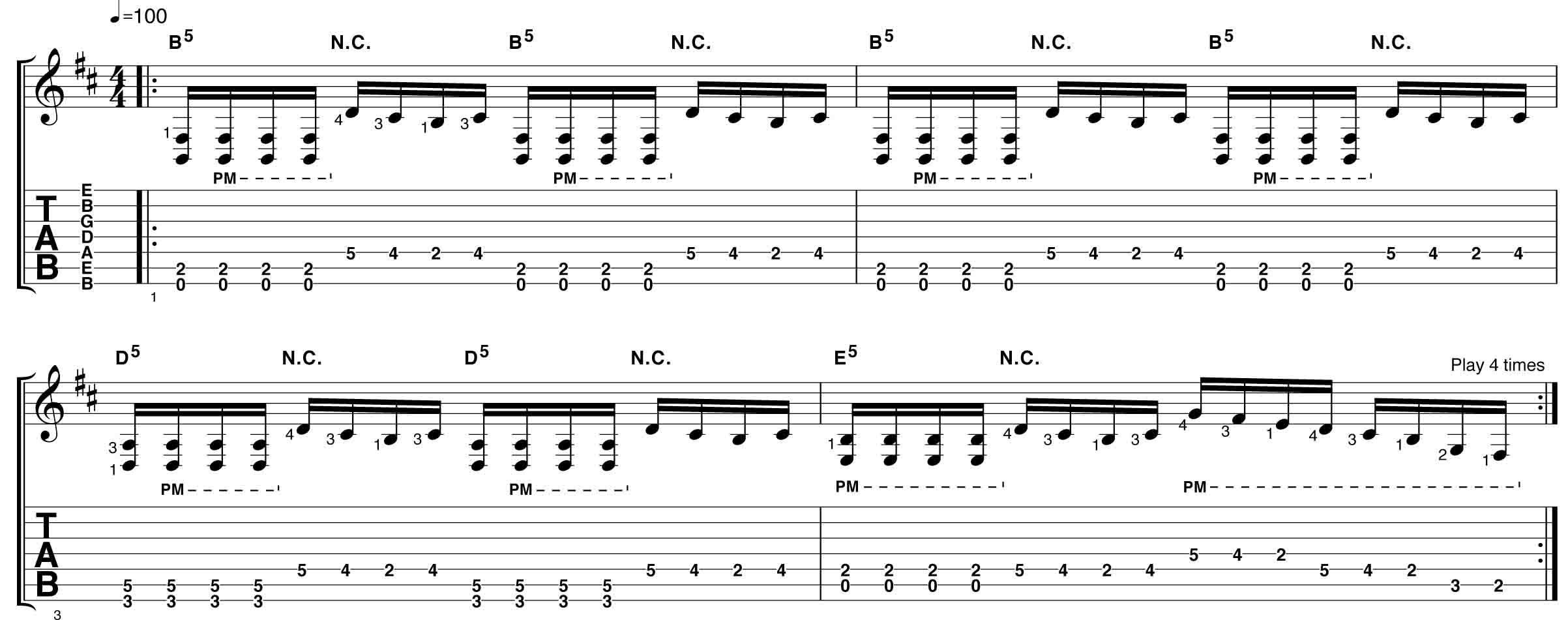

Chris Broderick-style seven-string riff
The main challenge with this Phrygian riff is switching from the finger-stretching powerchords rooted on the seventh string to the more intricate lead line on the first and second strings. You’ll benefit from practising this shift (as well as the fast six-note opening phrase) at a slow speed.
Once your hand is in position for the melody line focus on cleanly muting out the bass strings with the side of your picking hand so that only the notes you pick come through cleanly.
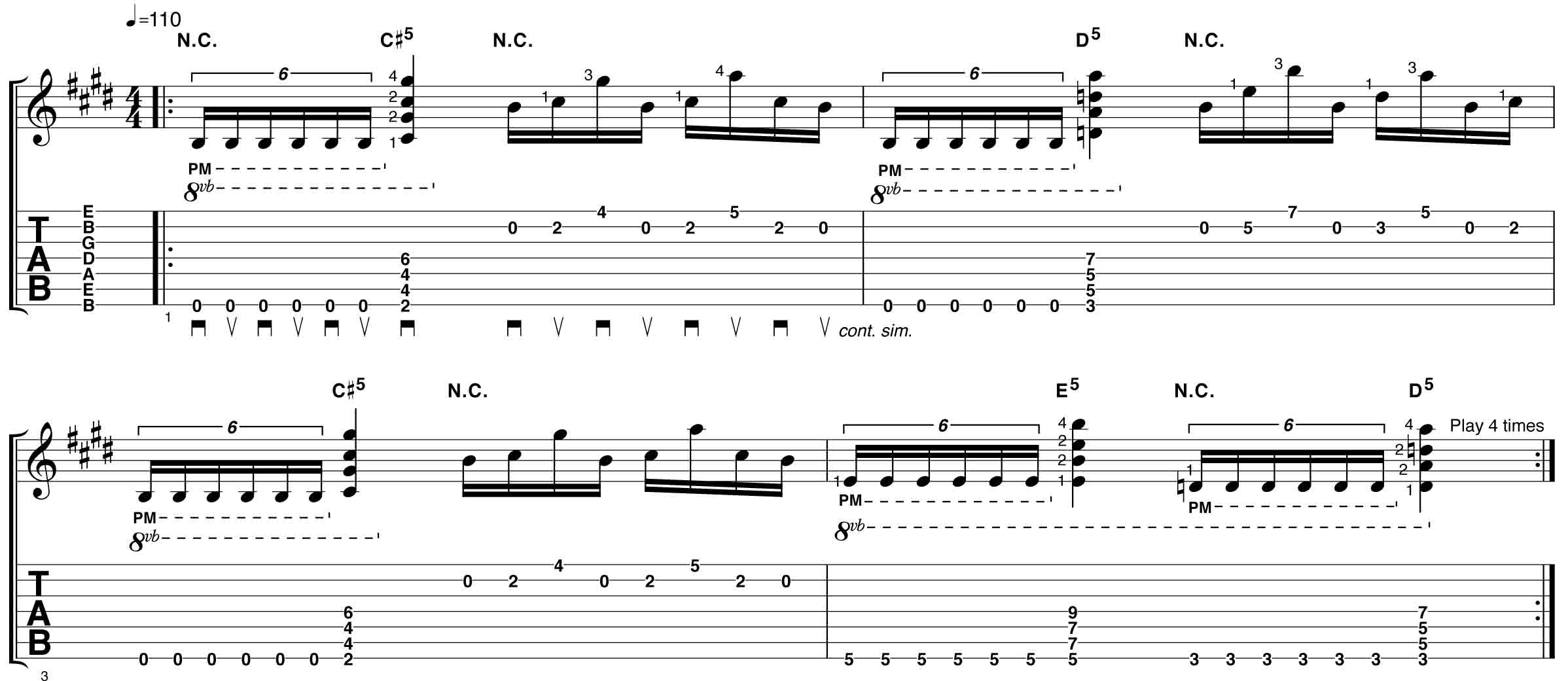
Chris Broderick-style seven-string riff tab (fullscreen)
Don't Miss
In pictures: an introduction to seven-string and eight-string guitars
Chris Broderick on seven-string guitars and Jackson signature models
Trivium's Corey Beaulieu talks seven-string guitars, signature models and songwriting
Periphery's Misha Mansoor talks seven-strings, eight-strings and Jackson guitars
Total Guitar is Europe's best-selling guitar magazine.
Every month we feature interviews with the biggest names and hottest new acts in guitar land, plus Guest Lessons from the stars.
Finally, our Rocked & Rated section is the place to go for reviews, round-ups and help setting up your guitars and gear.
Subscribe: http://bit.ly/totalguitar
